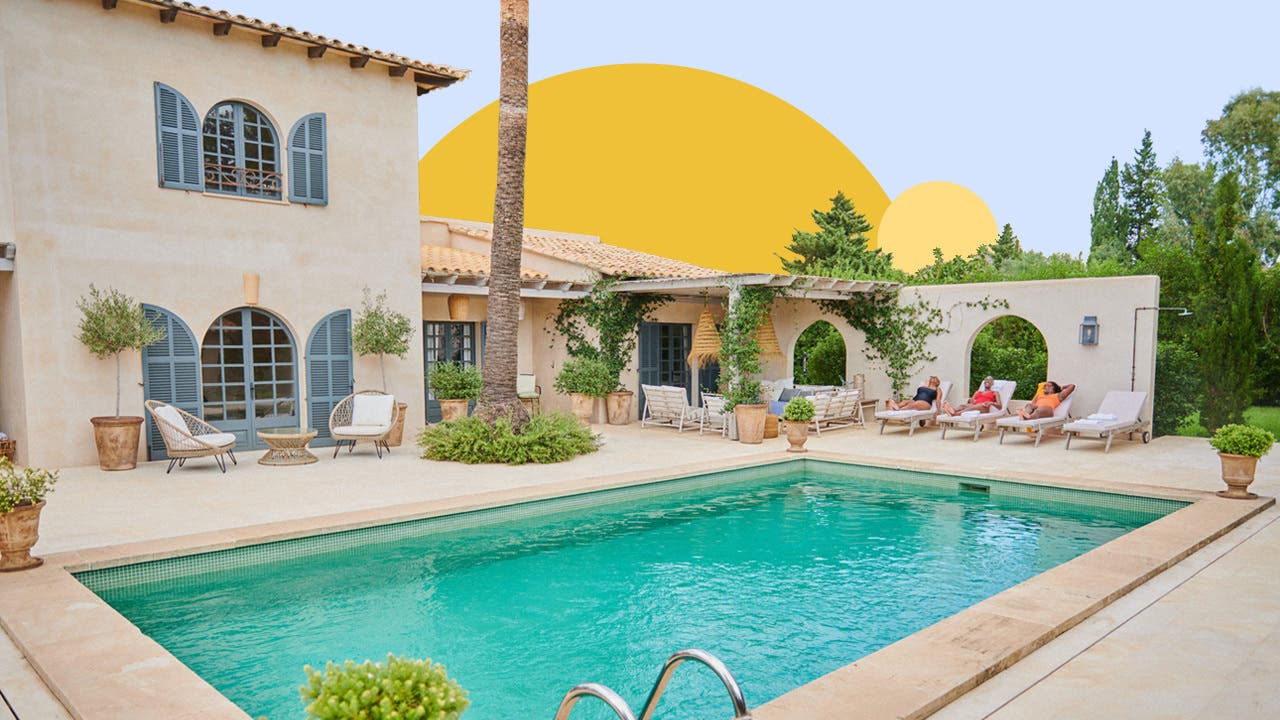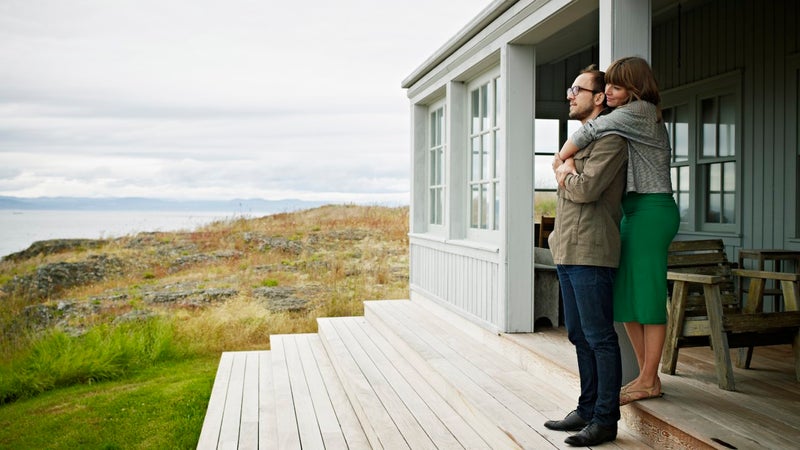How to get a mortgage for a vacation home

The Bankrate promise
At Bankrate we strive to help you make smarter financial decisions. While we adhere to strict , this post may contain references to products from our partners. Here's an explanation for .
Key takeaways
- You can get a loan for vacation homes, such as a fixed-rate conventional loan or home equity line of credit, from a private lender, but there are no government-backed loans for vacation homes.
- Qualifying for a vacation home loan is typically harder than it is for a primary property, with stricter debt-to-income ratio, credit score and down payment requirements.
- A local lender can help you navigate local regulations and find the best vacation home insurance for your property.
Buying a second home is a big step but comes with personal and financial rewards. Whether you’re considering taking out a loan for a vacation home now or it’s still on your wish list for the future, there are steps that can make financing a vacation home more seamless.
How to get a mortgage for a vacation home
As with any home purchase, financing a new vacation home requires serious thought and preparation. Consider these factors before you buy:
Step 1: Decide how you’ll use the vacation home
- Primary residence. If you don’t yet own a home, you can use the vacation home as your primary residence. You could qualify for a home loan with just 3 percent down, assuming the purchase price isn’t greater than the conforming loan limit in your area, and take advantage of homeowner tax benefits.
- Secondary residence. You can use the property as your second home, but you’ll likely need at least 10 to 15 percent down to secure a loan.
- Investment property. If you live in the home for less than 14 days per year and are using it as an investment property you’ll pay more in interest on the loan, and the down payment will be much higher.
Step 2: Determine what you can afford
Before you decide to take out a mortgage on a vacation home, it’s important to understand the costs you might face and determine if a vacation home is in your budget.
In addition to your monthly mortgage payment, you’ll pay other expenses associated with vacation property ownership. These expenses generally include:
- Maintenance and repairs
- Furniture and housewares
- Management and vacancies (if you rent)
Step 3: Find out about vacation home insurance
If you’re planning to get a loan for a vacation home, your mortgage lender might require that you purchase a vacation home insurance plan. These costs vary depending on the property’s type and location. For example, a beachside home can be riskier due to the potential for hurricanes and flooding, so premiums will likely be higher than homes more inland.
Look into the availability and cost of insurance before you decide to buy a vacation home, and factor it into your budget.
Step 4: Work with a local mortgage lender and a local Realtor
Buying real estate in a new area — or even one you’ve vacationed in for many years — requires expert guidance. That makes it a good idea to work with an experienced local lender who specializes in loans for vacation homes and a local real estate professional. Local lenders and Realtors will understand the required rules and specifics for the area you are buying, and a local Realtor will know what properties are available.
Step 5: Decide how to finance your vacation home
Once you find a lender and know what you can afford, explore your options for financing a vacation home.
- Conventional loan: A conventional loan for a vacation home is typically a fixed-rate mortgage, which locks in a certain mortgage rate for a specific term of up to 30 years.
- Adjustable-rate mortgage (ARM): You can also get an adjustable-rate mortgage (ARM) on vacation homes. This type of mortgage locks in your interest rate for a set initial period, usually between five and 10 years. After that, it changes to the current market rate.
- Home equity loan or home equity line of credit (HELOC): If you have equity in your current property, you may have the option of either a home equity loan or a HELOC. This uses your ownership stake as collateral for your loan or line of credit. You could also opt for a cash-out refinance, which turns your existing mortgage into a new, larger mortgage and lets you borrow your home equity in cash.
VA loans and FHA mortgages are not eligible for vacation homes, as the government finances loans for primary residences or first-time homebuyers.
Step 6: Compare vacation home mortgage rates
Vacation home mortgage rates are typically higher than financing for a primary residence — about 0.5 percent to 1 percent extra. Be sure to search for the best second home mortgage rates and terms.
Vacation home loan requirements
Before you can be approved for a mortgage on a vacation home, you and the home must meet a few requirements.
As a borrower, the requirements you must meet for a vacation home mortgage include:
- Debt-to-income ratio: Borrowers can sometimes finance with a 50 percent debt-to-income ratio (DTI) for a primary residence. For a vacation property, DTI can be up to 45 percent. (Rental income cannot be used to qualify the borrower.)
- Credit score: Lenders tend to look for a higher credit score when financing vacation home properties. You will likely need a credit score of at least 660 for a vacation home loan, compared to the 620 typically required for primary residence mortgages.
- Down payment: Lenders typically require at least a 10 percent down payment on vacation homes, while primary residences may only require 3 percent down.
- Reserves: In some cases, you can buy a primary residence with little or no reserves. For a vacation home, you’ll likely need reserves equal to two to six monthly mortgage payments.
To get a loan for a vacation home, the property must meet the following requirements, according to Freddie Mac:
- It must be a single-unit dwelling.
- It cannot be a timeshare.
- It must be suitable for year-round occupancy.
- The borrower must occupy it for some portion of the year.
- The borrower must have exclusive control over the property.
- The property cannot be subject to any agreements that give a management firm control over the occupancy of the property.
Other ways to finance a vacation home
There may be other ways, aside from getting a mortgage, to finance the vacation home you’ve been eyeing.
- Buy with family or friends: If you’re okay with sharing the vacation home with family members or friends, you can go in on the purchase price together to make it more affordable.
- Put a savings plan in place: This is a longer-term plan that will require patience and persistence, but consider adding a vacation home savings plan to your budget and contributing to it monthly.
Vacation home FAQ
-
A vacation home can be a valuable asset that allows you to build wealth over time and can even provide a passive stream of income. However, first, you must ensure that your budget can comfortably afford the mortgage payment and the additional upkeep expenses. Read up on other important considerations before buying a second home to inform your decision.
-
A vacation home mortgage will cover the cost of the home’s purchase price — minus your down payment — plus interest and any fees for originating the mortgage. You’ll also have to pay for property taxes and insurance, as well as possible homeowner’s association and related fees.
-
Depending on how you use your vacation home, it may be very similar to a second home in the eyes of the IRS. A second home is considered a home you maintain in addition to your primary residence. You must occupy it for more than 14 days a year or an amount of time equivalent to 10 percent of the days you rent it out.
If you use a vacation home similarly, occupying it for more than 14 days a year or 10 percent of the days you rent it out, it, too, is considered a second home.


